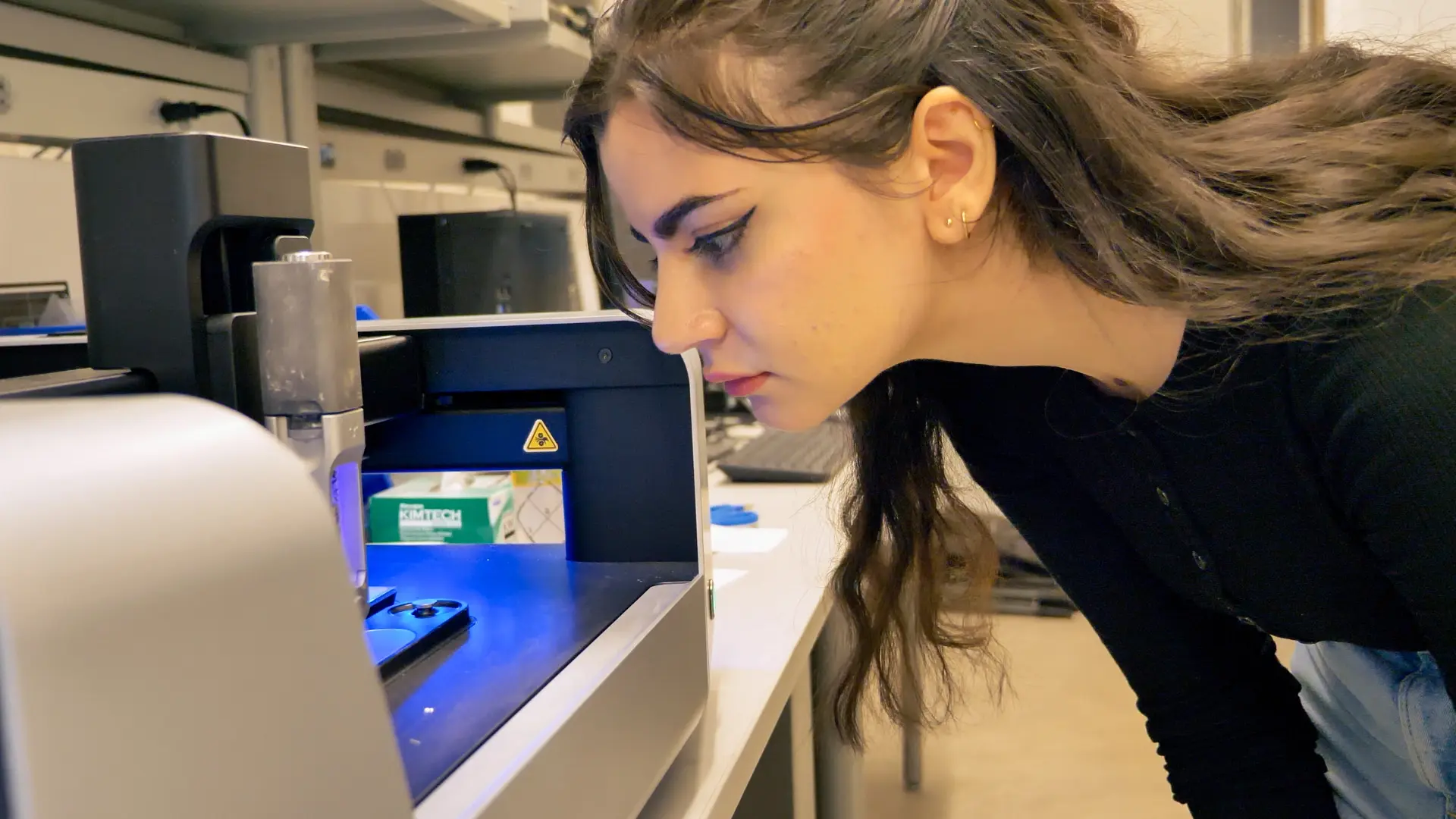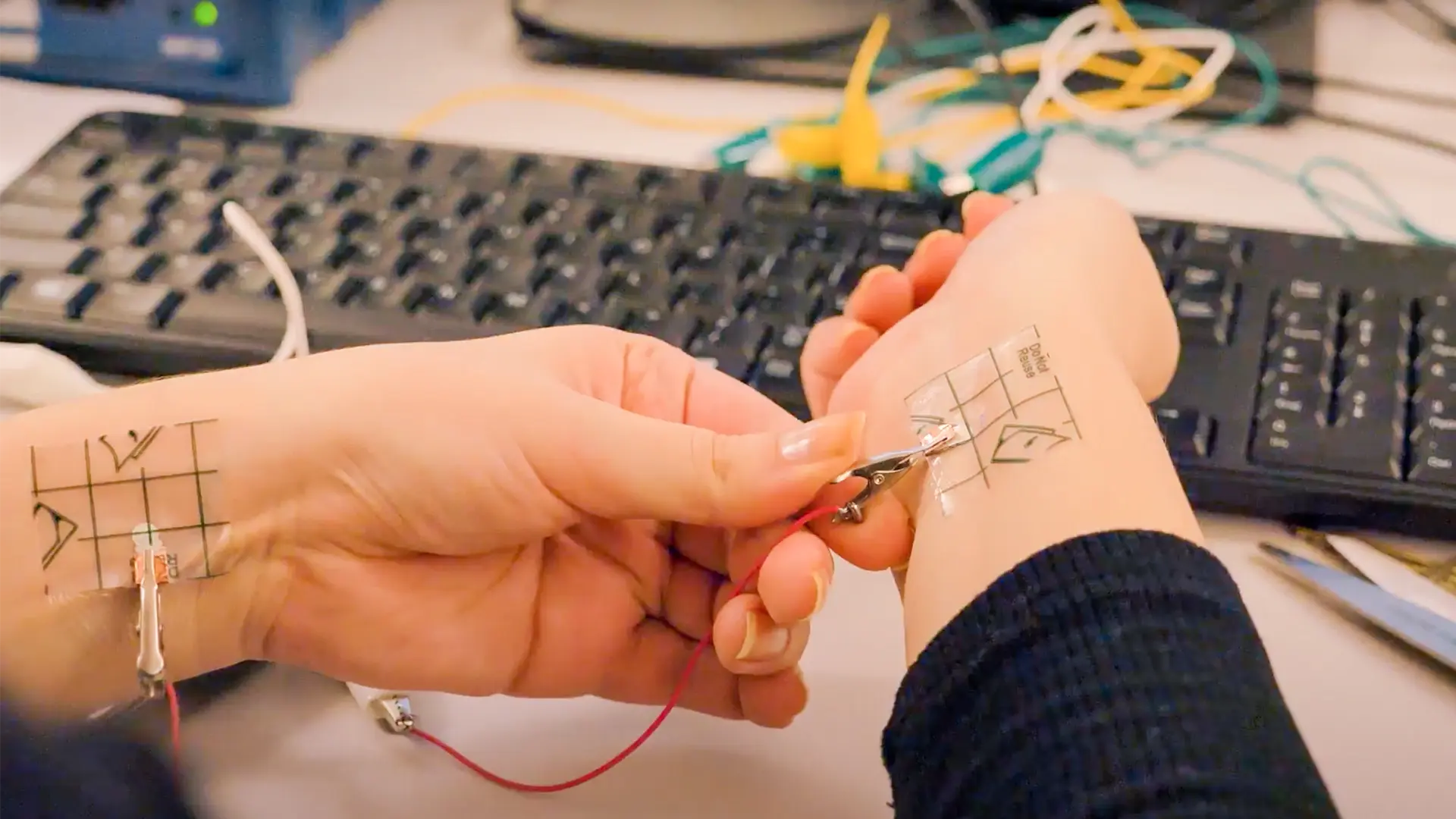Adhesive Dispensing Explained: Methods and Materials
Adhesives play a crucial role in the manufacturing of modern electronics and product development, from securing tiny surface-mount components on circuit boards to bonding structural parts in advanced devices. Unlike mechanical fasteners, adhesives bond dissimilar materials with uniform stress distribution, while providing thermal and electrical insulation, simplifying structural design [1].
Types of adhesives


Adhesives evolved from ancient natural materials like clay to early synthetics like phenolic resins. Polymer advances in the 1930s introduced epoxy resins (1950s), cyanoacrylate (1957), and hot melt glues (1960s) [2].
The most recent innovations in adhesives are concerned with greener solutions. For example:
- Switchable adhesives activated by light, heat, magnetic fields, or electricity, enabling reversible bonding in robotics, electronics, and microfluidics [2][3]
- Poly(hydroxyurethane) (PHU) derived from cyclic carbonates and amines as a safer, non-isocyanate alternative to polyurethanes, expanding anticorrosion and flame-retardant applications [4]
- Biocompatible adhesives engineered for strong tissue adhesion plus antimicrobial activity, drug delivery, or self-healing, improving surgical outcomes [5]


Adhesive dispensing methods
Selecting the appropriate adhesive dispensing method is as critical as the adhesive choice. The main methods include manual dispensing, non-contact jetting, and contact dispensing.
Manual glue dispensers, such as handheld hot melt glue guns, have been reported to have the lowest shot-to-shot repeatability (the system’s ability to deliver consistent volumes of adhesive) of all. For precision applications, the goal is to deposit the right adhesive amount at the right location with repeatable accuracy.
Researchers [6] have identified contact dispensing systems as “the most effective dispensing technology” for accommodating a wide viscosity range. These systems vary from desktop direct ink writing (DIW) to 4-axis robotic hands.


Choosing adhesive dispensing equipment and substrates
Selecting adhesive and fluid dispensing systems requires balancing cohesive forces (within the adhesive) and adhesive forces (between the adhesive and substrate).
Rheological and chemical properties of adhesives
Viscosity governs flow characteristics, affects droplet or line formation, and impacts equipment compatibility. In general, low-viscosity adhesives are suited to non-contact jetting, while high-viscosity adhesives often necessitate contact dispensing systems due to their flow resistance.
For example, one study [7] found that epoxy adhesives with 60 weight percentage hybrid fillers (graphite, boron nitride, and silver flakes) exhibited an 11-fold viscosity increase over neat epoxy, directly impacting flow resistance during dispensing.


Substrate wettability
The surface energy of substrates dictates adhesive wetting and bond strength. High-surface-energy materials, such as metals, ceramics, and glass, enable adhesives to spread and form strong interfacial contact. Conversely, low-surface-energy polymers like polytetrafluoroethylene (PTFE), polyethylene (PE), or polypropylene inhibit wetting, causing adhesives to bead up and delaminate [8].
Adjusting dispensing parameters


Fine-tuning an adhesive dispensing system’s parameters is essential to ensure high-quality adhesive application, as small adjustments significantly affect feature formation, size, and bond strength. Key parameters include dispensing pressure, time, rate, lifting speed, needle size, and temperature.
Dispensing pressure
Dispensing pressure directly influences adhesive flow and feature consistency. High-viscosity adhesives need greater pressure to flow through the needle; however, too much pressure can cause overflow or tailing, leading to more waste and inconsistent deposit shapes [6].
Dispensing time and rate
Dispensing time (the duration for which the adhesive is actively extruded) and dispensing rate (volume dispensed per unit time) determine deposit size and shape. Longer dispensing times increase deposit size and wetting area, but excessive durations produce unstable droplets due to persistent liquid bridges [6].
Lifting speed
The speed at which the dispensing tip lifts away from the substrate also affects deposit morphology. Lower lifting speeds allow the adhesive more time to stabilize, forming smoother and more uniform features. In contrast, higher lifting speeds can produce uneven feature shapes with pronounced tailing and instability [6].
Temperature control
Adjusting the temperature of the adhesive can alter its viscosity and improve dispensability. For two-part adhesives and structural acrylics which have a limited pot life, dynamic temperature control helps ensure consistent application even as ambient conditions fluctuate.
Slightly increasing the temperature may reduce viscosity, facilitating smoother adhesive flow through the syringe barrels and needle. However, excessive temperatures could prematurely initiate curing or degrade adhesive performance [8].
Conclusion
Dispensing adhesives is a precise science — it requires understanding the chemistry and behavior of your chosen adhesives as well as mastering the equipment and process control parameters. By selecting the right type of adhesive for the job and using appropriate adhesive dispensing systems, researchers, engineers, and product designers can optimize their designs and increase efficiency and throughput.
Interested in learning more about dispensing adhesives? Check out these resources:
- Application overview: Adhesive dispensing systems
- Blog: What Is Electronics Encapsulation?
- Blog: What Is Dot Dispensing?
Want to explore dispensing adhesives with NOVA? Book a meeting to speak with one of our technical representatives.
Frequently Asked Questions
What are the best adhesive systems for automated dispensing?
The best options for automatic adhesive dispensing combine precise flow control with easy calibration. NOVA uses direct ink writing (DIW) to handle a wide range of materials, from epoxies to flexible conductive inks, while maintaining consistent bead geometry and minimal waste.
What maintenance does adhesive dispensing equipment require?
Regular cleaning and inspection reduce downtime. We recommend keeping nozzles clear and storing materials properly to ensure smooth, efficient operation with little maintenance needed for ongoing reliability and productivity.
Where can I find help if I’m new to dispensing systems?
Reach out for technical support to review parameters, troubleshoot issues, or choose materials. Our expert advice helps you operate your system more efficiently and avoid wasted runs.
Can I use the same dispensing setup for solder pastes?
No. Solder pastes behave differently — they contain metal particles that melt during the reflow process. The dispensing principles are similar, but cure temperatures, handling, and cleanup differ. Always follow the correct process to protect your machine and maintain productivity.
Do adhesives also act as sealants?
Many formulations double as sealants for environmental sealing, gasketing, or protection around sensitive parts. Selecting the right chemistry prevents leaks and ensures long-term reliability.
References
[1] Maggiore, S., Banea, M. D., Stagnaro, P., & Luciano, G. (2021). A Review of Structural Adhesive Joints in Hybrid Joining Processes. Polymers, 13(22), 3961. https://doi.org/10.3390/polym13223961.
[2] Liu, Z., & Yan, F. (2022). Switchable Adhesion: On‐Demand Bonding and Debonding. Advanced Science, 9(12), 2200264. https://doi.org/10.1002/advs.202200264.
[3] Wasay, A., & Sameoto, D. (2014). “Geckofluidics”: A new concept in reversible bonding of Microfluidic Channels. Hilton Head Workshop 2014: A Solid-State Sensors, Actuators and Microsystems Workshop. https://doi.org/10.31438/trf.hh2014.119.
[4] Gomez-Lopez, A., Panchireddy, S., Grignard, B., Calvo, I., Jerome, C., Detrembleur, C., & Sardon, H. (2021). Poly(hydroxyurethane) Adhesives and Coatings: State-of-the-Art and Future Directions. ACS Sustainable Chemistry & Engineering, 9(29), 9541–9562. https://doi.org/10.1021/acssuschemeng.1c02558.
[5] Pinnaratip, R., Bhuiyan, M. S. A., Meyers, K., Rajachar, R. M., & Lee, B. P. (2019). Multifunctional Biomedical Adhesives. Advanced Healthcare Materials, 8(11), 1801568. https://doi.org/10.1002/adhm.201801568.
[6] Zou, J., Huang, M., Zhao, D., Chen, F., & Wang, D. (2023). Modeling the contact dispensing process of conductive adhesives with different viscosities and optimization of droplet deposition. Frontiers in Materials, 10. https://doi.org/10.3389/fmats.2023.1183747.
[7] Kumar, R., Mishra, A., Sahoo, S., Panda, B. P., Mohanty, S., & Nayak, S. K. (2019). Epoxy‐based composite adhesives: Effect of hybrid fillers on thermal conductivity, rheology, and lap shear strength. Polymers for Advanced Technologies, 30(6), 1365–1374. https://doi.org/10.1002/pat.4569.
[8] Lall, P., Goyal, K., Schulze, K., & Miller, S. (2021). Electrically Conductive Adhesive Interconnections on Additively Printed Substrates. https://doi.org/10.1109/itherm51669.2021.9503235.

Check out our Customer Stories
Take a closer look at what our customers are doing in the industry.
